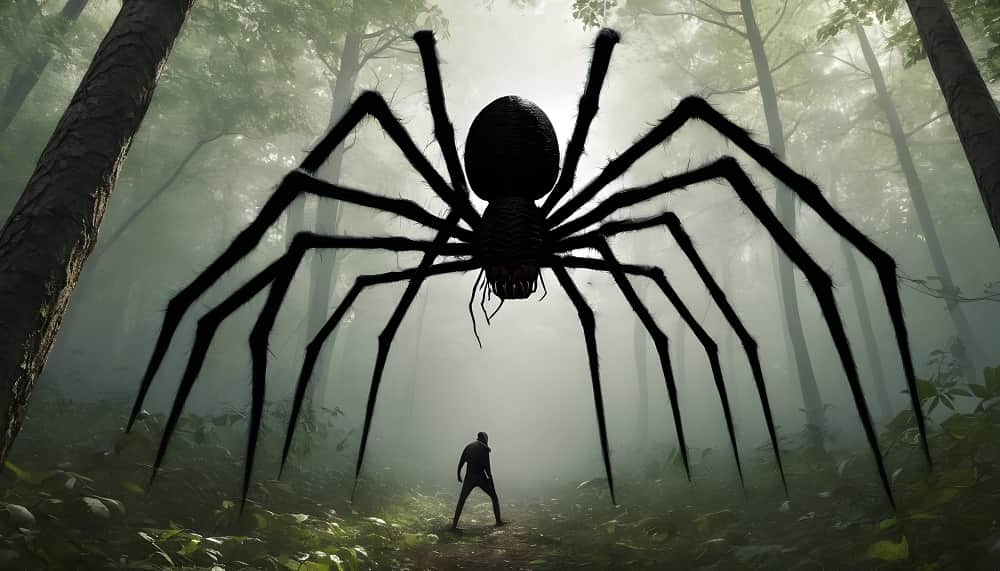The J'Ba Fofi, also known as Congolese Giant Spiders, stands as an arachnid of colossal proportions. In the annals of Earth's history, these creatures once traversed the land during the era of dinosaurs. Remarkably, according to the indigenous people of Congo, these gargantuan spiders persist in the depths of their forests. While tales of such spiders have echoed from various corners of Africa, the Congo forest holds a unique mystique for these eight-legged behemoths. Among the indigenous communities, like the Baka, the creature is known as J'Ba Fofi, with its leg span purportedly reaching four and a half to five feet.
Venturing into the recorded history, in 1890, an intrepid English missionary, traversing Uganda, stumbled upon the intricate web of a giant spider within the Congo forest. Intrigued, the missionary and his companions found themselves ensnared in the web, as a colossal spider emerged from the shadows, launching an attack with its formidable fangs. Miraculously, the missionary alone emerged from that eerie forest. The narrative continued in 1938 when researchers collaborated with indigenous communities to unveil the mysteries of this creature. Revelations disclosed that the spider lays thousands of peanut-shaped eggs and strategically weaves its web in the dense foliage, ensnaring birds and even large animals for sustenance.
An anecdote unfolds where Reginald Lloyd and his wife, navigating the rugged paths of the Congo forest, encountered the creature crossing their path. Initially mistaken for a colossal monkey, a closer look revealed the nightmarish reality - the enormous spider from their worst dreams.
Subsequently, a plethora of encounters with this creature surfaced, leaving researchers intrigued. The simultaneous claims from disparate parts of Africa, where the Congo forest held its enigma, raised curiosity. Early in the exploration stages, jungle-dwelling tribes cautioned researchers about the perilous giant spider webs, asserting that once ensnared, escape was nigh impossible. Rumors circulated of spiders capable of leaping between trees and surpassing human speed. Explorers discovered peculiar holes near the roots of giant trees, presumably crafted by these colossal spiders for easy concealment.
Enter William J. Gibbons and his team, embarking on a Congo forest expedition in pursuit of Mokele-mbembe. To their astonishment, they uncovered the existence of giant spiders. Pygmies shared details, describing the spider's massive size, brownish spiny hairs, and a distinctive purple stomach. While William himself did not lay eyes on this creature, a team member recounted a harrowing encounter.
Scientific exploration into common spiders illuminated the constraints imposed by their respiratory systems, suggesting a size limitation. Yet, anomalies were noted – instances where spiders, due to unique environments or reasons, surpassed these limits, evolving diverse respiratory systems and growing exponentially larger than their counterparts. The possibility arises that in regions like the Congo, an environment fosters the development of such colossal spiders, pushing the boundaries of their size.













0 comments:
Post a Comment